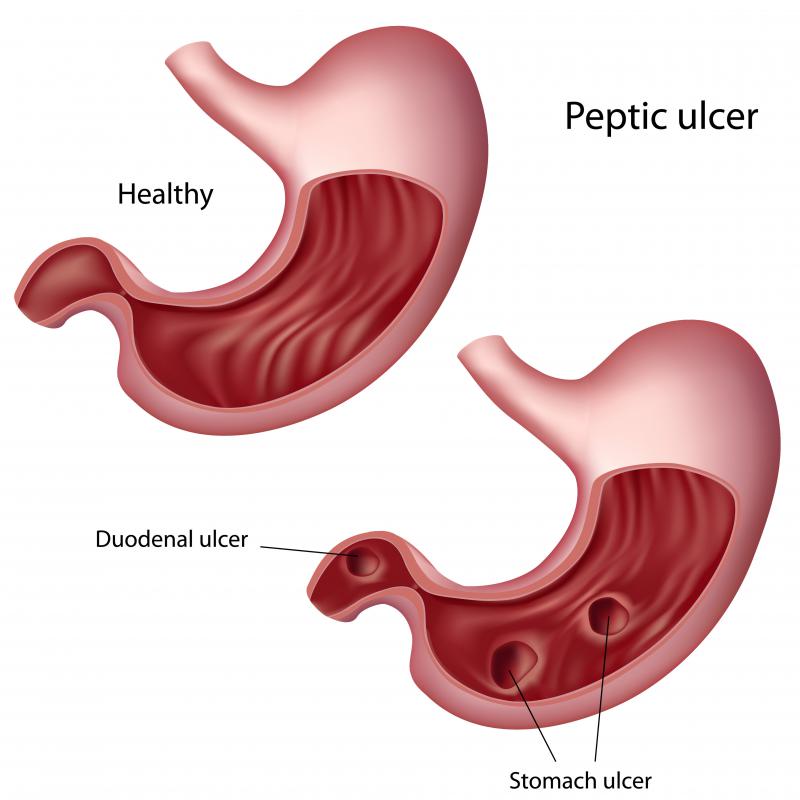At WiseGEEK, we're committed to delivering accurate, trustworthy information. Our expert-authored content is rigorously fact-checked and sourced from credible authorities. Discover how we uphold the highest standards in providing you with reliable knowledge.
What Is Ulcer Debridement?
Ulcer debridement is the surgical or chemical removal of necrotic or dead tissue, skin debris, and calluses from a leg or foot ulcer to promote healing. After the ulcer debridement, the wound is flushed with saline solution or other sterile wound cleanser. In serious wounds, skin may be grafted onto the wound to encourage healing. The surgeon needs to assess the patient's vascular status prior to the ulcer debridement because this procedure is not recommended for those whose vascular status is compromised.
When surgical ulcer debridement is not a viable option, chemical debridement may be considered. Chemicals, or more specifically, enzymes, are used to debride the wound. A procedure known as autolytic debridement takes moisture away from the patient's body, which helps soften and slough off the tissue. A surgical ulcer debridement is done under a general anesthetic and is performed with surgical tools such as sharp scalpels and surgical scissors.

An ulcer debridement is generally safe, however, complications can occur. These complications include bleeding, pain, infection, and the accidental removal of healthy tissue. Delayed healing may also occur, especially in those with less than optimal vascular function. Certain factors might increase complications, including diabetes, infection, and poor nutrition. A compromised immune system, smoking, and poor circulation can also be predisposing factors for complications of an ulcer debridement.

The surgeon may also recommend an ulcer debridement to make a neat edge so that the risk of scarring will be minimized. Regardless of why the procedure needs to be done, prior to the procedure, the patient will undergo a thorough physical examination and the surgeon will measure the wound to be debrided. Pain relief medication may also be prescribed so that the patient is comfortable before he changes his dressings.
Typically, a surgical debridement is done in an outpatient setting so that the patient can return home the same day. It may, however, take weeks or even months before the wound heals. To facilitate healing, the newly debrided wound needs to be kept clean and dry and the patient needs to follow his doctor's orders explicitly.
At the first sign of infection, the patient needs to call his surgeon, who will need to evaluate the wound. Signs of infection include pain, redness, and an increase in temperature around the wound. The presence of pus, an offensive odor and fever may also be a sign of a wound infection. In the event of an infection, the surgeon will order a course of oral antibiotics. If an oral antibiotic is not effective in eradicating the infection, hospitalization may be necessary so that intravenous antibiotics can be started.
AS FEATURED ON:
AS FEATURED ON:












Discuss this Article
Post your comments